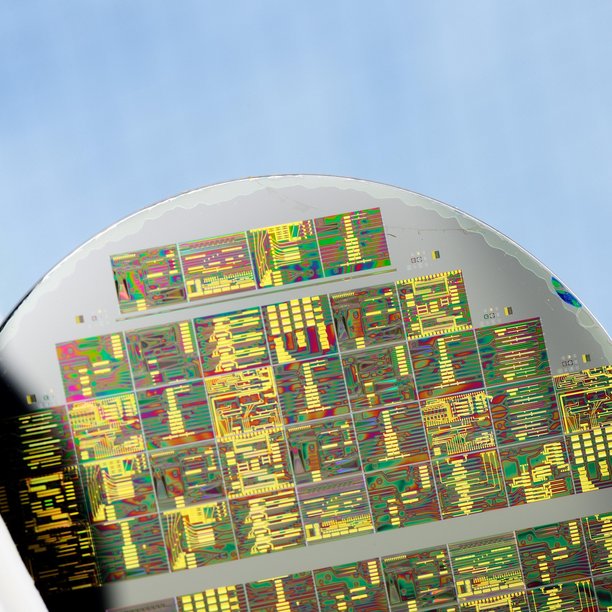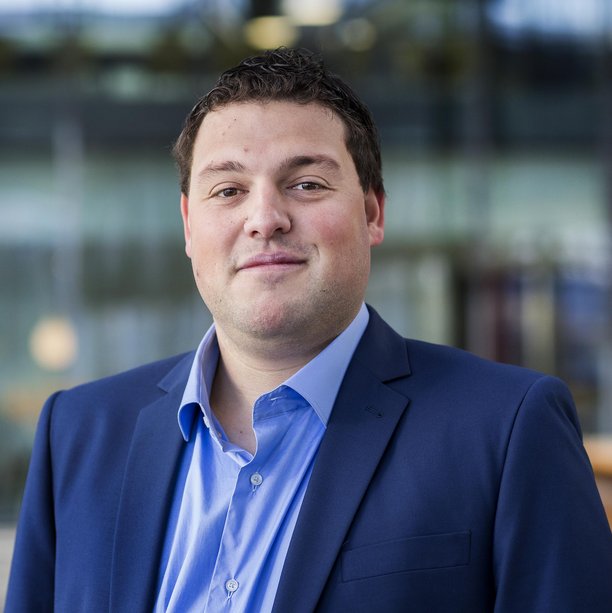Photonics at TU/e
During the past 50 years an explosive growth spurt within electrical engineering has radically altered our lives. Society has become dependent on the products produced by electrical engineering – in fact, no other discipline has had such an impact. The next 50 years will see even more radical changes in areas such as communications, healthcare, energy supply, mobility and production automation.
In view of these developments, the Department of Electrical Engineering has identified three areas of research with high societal relevance:
- The Connected World (Developments in Communication)
- Smart and Sustainable Society (Working Toward a Sustainable Society)
- Care and Cure (Electrical Engineering in the Healthcare Sector)
The department’s employees and students have achieved resounding successes in close collaboration with industry and social partners in each of these research fields.
This interview focuses on some of the demanding challenges in The Connected World. Today’s data traffic is already nudging the physical limits of contemporary microelectronics. Data centers around the globe currently devour more than three percent of the total power generated in the world and this voracious use of power is predicted to rise to double figures if we fail to tackle the problem.
Photonics – the technology that uses light instead of electrons to carry information – is the answer. We talk to three key employees associated with TU/e’s Institute for Photonic Integration (IPI). They are PhD candidate John van Weerdenburg (Electro-optical communications), Associate Professor Oded Raz (Electro-optical communication group) and Professor Jaime Gómez Rivas (Photonics and semiconductor nanophysics group).
Why does TU/e stand out in Photonics?
Jaime: TU/e is unique in that the link to local companies drives fundamental research. I am working on Strongly Coupled Optoelectronics, which is funded by a 1.5 million euro VICI grant from the Netherlands Organization for Scientific Research (NWO). The potential benefits of this fundamental research into the properties of materials at nano level include a quantumleap improvement in the performance and efficiency of solar cells and LEDs and lasers. We first worked in this area with Philips, so you could say one thing led to another. And TU/e’s excellent and highly modern lab facilities were a further contributory factor.
Oded: After being awarded a PhD in Microwave Photonics by Tel Aviv University, I started looking around for a research position. Although I briefly considered the USA, I came to TU/e because of its strengths and applied science track record in this particular area. I like to contribute to society by developing products, helping businesses and teaching and mentoring the next generation of young researchers. TU/e ticks all those boxes. And finding a good balance between work and family is no problem here in Eindhoven.
John: I discovered a passion for research during an internship with a German Telecom company. When TU/e offered me a position that matched my area of interest – incidentally also a NWO project – I jumped at the chance. The project involves ramping up optical fiber performance in terms of speed, distance and bandwidth – quite a challenge! Although I love experimental work, I also see a possible career path in business, so IPI’s strong links with industry are an attractive part of the mix.


What exciting projects have you worked on during the past 12 months or so?
Jaime: I worked on a polariton lasing project. Our work demonstrates the first polariton laser based on a plasmonic open cavity using an organic emitter. I know this sounds fairly opaque, but the exciting thing here is that we have discovered an architecture, produced using nanoimprint lithography, that will potentially lead to straightforward implementation of polariton lasing in actual devices. And this all takes place at room temperature, so it really is a big deal! The applicationrelated benefits lie in much faster data transmission and component miniaturization.
Oded: We succeeded in demonstrating photonic components that offer more and faster channels, and greater bandwidth for interconnected data centers. And all packaged in a compact, energy-efficient design! The benefit is a huge jump in output. Several large corporations have shown interest, so this work will almost certainly lead to a spin-off.
John: We have made some real progress and have actually achieved transmission over a ten-mode fiber. This compares to three-mode and six-mode transmission achieved by others in the past. So we are already exploring new territory. The next challenge will lie in the area of the receivers and amplifiers.
Extremely interesting work. Where will you be in three years?
Jaime: I will be expanding the envelope of our photonics research. This is almost rewriting the laws of physics because you effectively create new materials by strongly coupling excitons to light. I also predict the first working devices for real-world applications - solar cells, for example.
Oded: We will have succeeded in creating a platform for programmable photonics, probably in collaboration with chemistry researchers.
John: I expect to have developed a new kind of optical fiber amplifier. Using today’s optical fiber technology without amplification, you can cover a distance of just 80 km. Peanuts in real-world terms! The true cost economies can only be realized if you can effectively integrate amplification, and that requires a new approach and a new design.


Would you recommend TU/e to other academics looking for a research position?
Jaime: It’s the place to be in this field. Our mission is to break through current technological and theoretical limits in photonics in all areas of the value chain. Only then can we solve some of society’s most pressing problems such as imminent congestion of our electronic superhighway. So it’s hardly surprising that very significant funding is being made available in this area, both by government agencies and large corporations. Everybody benefits because the deep wave of today’s fundamental research automatically leads to a glut of commercial opportunities.
Oded: Eindhoven’s eco-system and network is a breeding ground of opportunity. And there is a high level of interest in photonics. Obviously an exciting area for both junior and senior researchers!
John: As I said earlier, TU/e is a stepping stone to both academic and more commercial career paths. Particularly in this area through IPI. Any researcher looking for an exciting project and the opportunity to publish in this area should put Eindhoven at the top of the list.
What unresolved question or dream inspires you?
Jaime: My dream is to bring light-matter interaction to a level where we can create new states of matter, with properties that do not occur in nature, thereby creating the building blocks for future devices and applications. And I dream of being able to store light, something that is very difficult at the moment!
Oded: I would love to have the opportunity of managing a spin-off! My dream is to see my research used in reallife applications.
John: We have a proof of concept, but how scalable is it? My dream is a complete working system that revolutionizes fiber optic data transmission.
